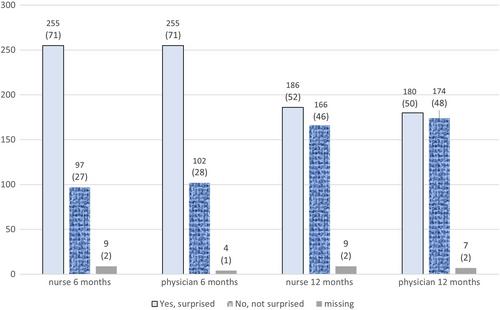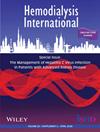Discrepancy in responses to the surprise question between hemodialysis nurses and physicians, with focus on patient clinical characteristics: A comparative study
Abstract
Introduction
The surprise question (SQ) “Would I be surprised if this patient died within the next xx months” can be used by different professions to foresee the need of serious illness conversations in patients approaching end of life. However, little is known about the different perspectives of nurses and physicians in responses to the SQ and factors influencing their appraisals. The aim was to explore nurses' and physicians' responses to the SQ regarding patients on hemodialysis, and to investigate how these answers were associated with patient clinical characteristics.
Methods
This comparative cross-sectional study included 361 patients for whom 112 nurses and 15 physicians responded to the SQ regarding 6 and 12 months. Patient characteristics, performance status, and comorbidities were obtained. Cohen's kappa was used to analyze the interrater agreement between nurses and physicians in their responses to the SQ and multivariable logistic regression was applied to reveal the independent association to patient clinical characteristics.
Findings
Proportions of nurses and physicians responding to the SQ with “no, not surprised” was similar regarding 6 and 12 months. However, there was a substantial difference concerning which specific patient the nurses and physicians responded “no, not surprised”, within 6 (κ = 0.366, p < 0.001, 95% CI = 0.288–0.474) and 12 months (κ = 0.379, p < 0.001, 95% CI = 0.281–0.477). There were also differences in the patient clinical characteristics associated with nurses' and physicians' responses to the SQ.
Discussion
Nurses and physicians have different perspectives in their appraisal when responding to the SQ for patients on hemodialysis. This may reinforce the need for communication and discussion between nurses and physicians to identify the need of serious illness conversations in patients approaching the end of life, in order to adapt hemodialysis care to patient preferences and needs.


 求助内容:
求助内容: 应助结果提醒方式:
应助结果提醒方式:


